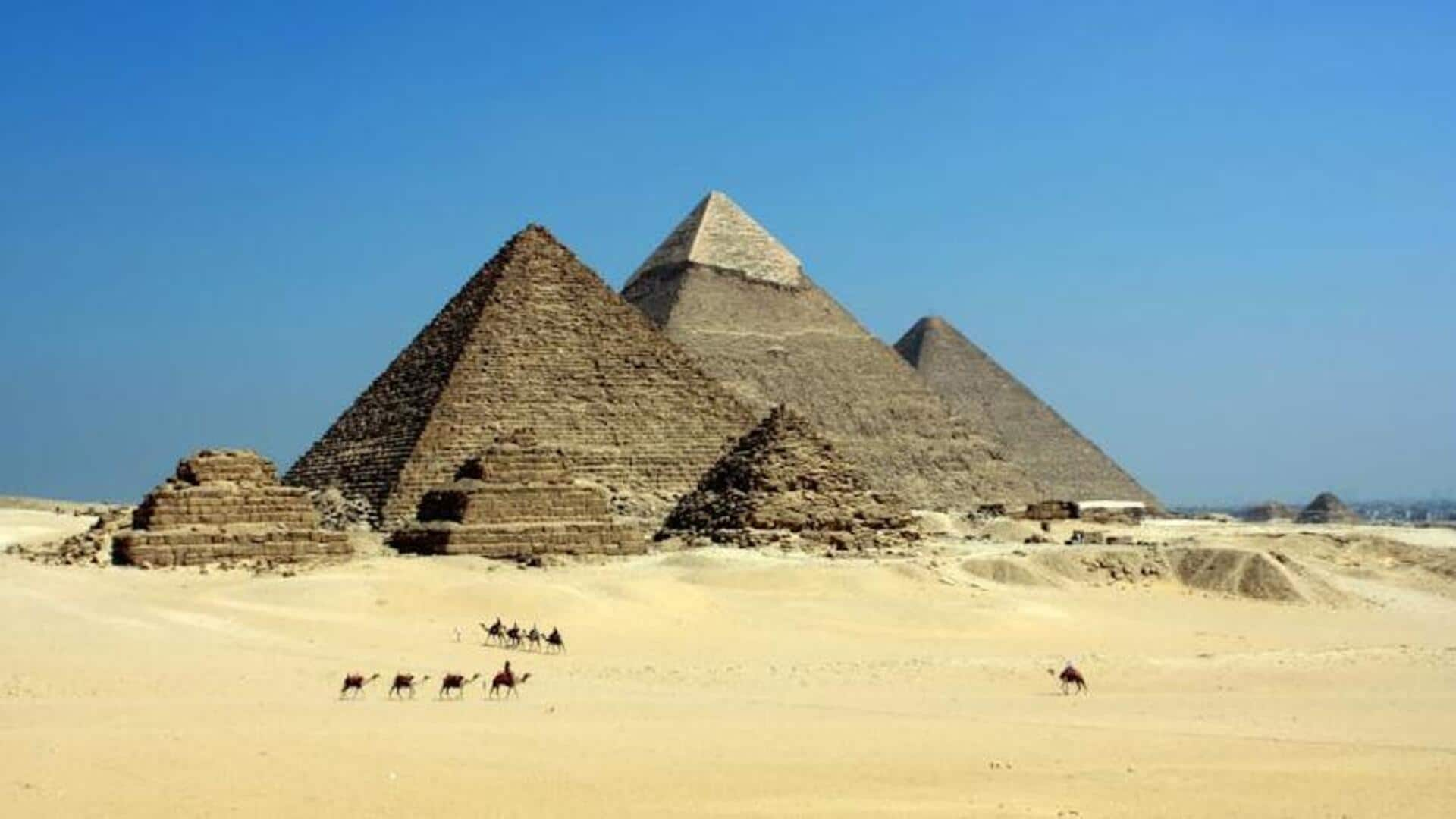
Unveiling Egypt's monumental myths
What's the story
Egypt, the cradle of ancient civilization, has captivated humanity with its monumental enigmas for millennia. From the colossal pyramids to the enigmatic Sphinx, these historical wonders attract millions of tourists annually. However, not all narratives surrounding these iconic landmarks are grounded in reality. This article busts some of the myths and misconceptions about Egypt's most famous monuments, offering a dose of reality for prospective visitors.
Construction facts
The Pyramids: Not built by slaves
Contrary to the popular belief that the Great Pyramids of Giza were built by slaves under brutal conditions. Recent archaeological discoveries paint a different picture: they were built by thousands of skilled workers who resided in temporary cities set up near the construction site. These workers were surprisingly well-nourished and received medical attention, suggesting they were not oppressed slaves but valued laborers.
Age debate
The Sphinx: Older than you think?
How old is the Sphinx at Giza? While conventional Egyptology attributes its construction to Pharaoh Khafre around 4,500 years ago, some researchers believe it's significantly older. They point to weathering patterns indicating it was shaped by water, not wind and sand, implying it was carved thousands of years before the era of the pharaohs.
Mummy misconceptions
Mummification: Not exclusive to royalty
Mummification in ancient Egypt is often associated exclusively with pharaohs and royalty. However, contrary to popular belief, it wasn't just a VIP ticket to the afterlife for the elite. Over time, mummification became a booming business, open to anyone with deep enough pockets. Everyone from wealthy middle-class folks to desperate eternal-life-chasers scrimping and saving for their shot at immortality got mummified.
Curse craze
The curse of the Pharaohs: A modern myth
The "Curse of the Pharaohs" originated after Howard Carter discovered Tutankhamun's tomb in the early 20th century. Media frenzy fueled superstition that disturbing a pharaoh's eternal slumber would bring misfortune or death. However, there is no scientific proof of such curses; they are simply figments of our imagination, amplified by sensationalism.
Language lost and found
Hieroglyphics: Not just decorative art
Hieroglyphics are not just pretty pictures on the walls of Egyptian tombs! In fact, they are a sophisticated writing system that blended logographic and alphabetic elements. Ancient Egyptians used them for everything from religious texts to government records. The key to reading hieroglyphics was lost until the Rosetta Stone was discovered and decoded in 1822. This breakthrough opened a treasure trove of knowledge about ancient Egyptian language and culture.